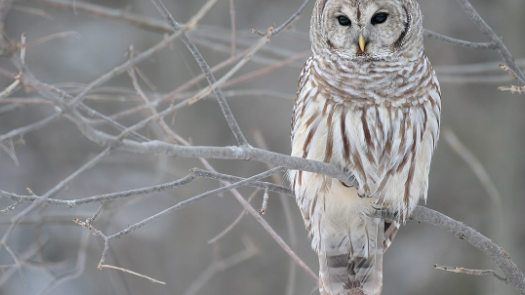Notes from a Naturalist in January
Male deer are shedding their antlers this time of year. If you are on a hike, keep an eye out for any shed antlers on the ground. They can be hard to spot because small rodents chew on the antlers. They do this because their teeth never stop growing and they have to keep their teeth filed down.
On clear nights, take a peek at the starry sky. This time of year, the Little Dipper can be seen in the northern sky. The Quadrantid meteor shower occurs near this constellation and can be seen in the early days of January.
Most owls in the northeast don’t migrate, they hang around all year. This means they get first dibs at nesting locations over other species. This time of year is when owls begin to pair up and establish territories. If you get a chance (possibly while you’re looking at the meteor shower), take a minute to listen for owls as they hoot back and forth to each other. There are 3 owls you can easily hear in your backyard. The Barred Owl can be recognized by its who cooks for you call, the Great Horned Owl can be recognized by its stuttering hoo-Hoo-hoo call, and the Eastern Screech Owl can be recognized by its horse-like whinny or bouncy trill.
January’s full moon, the Wolf Moon, is on the 17th.
Winter is a hard time of year to appreciate trees- their pretty leaves are all gone! However, bark takes the stage during the cold months. When you go outside, take a moment to enjoy the beauty and intricacy of bark while the leaves are fallen.
Adapted from the Mass Audubon Outdoor Almanac which can be found at this link: https://www.massaudubon.org/learn/nature-wildlife/outdoor-almanac/winter-2022


